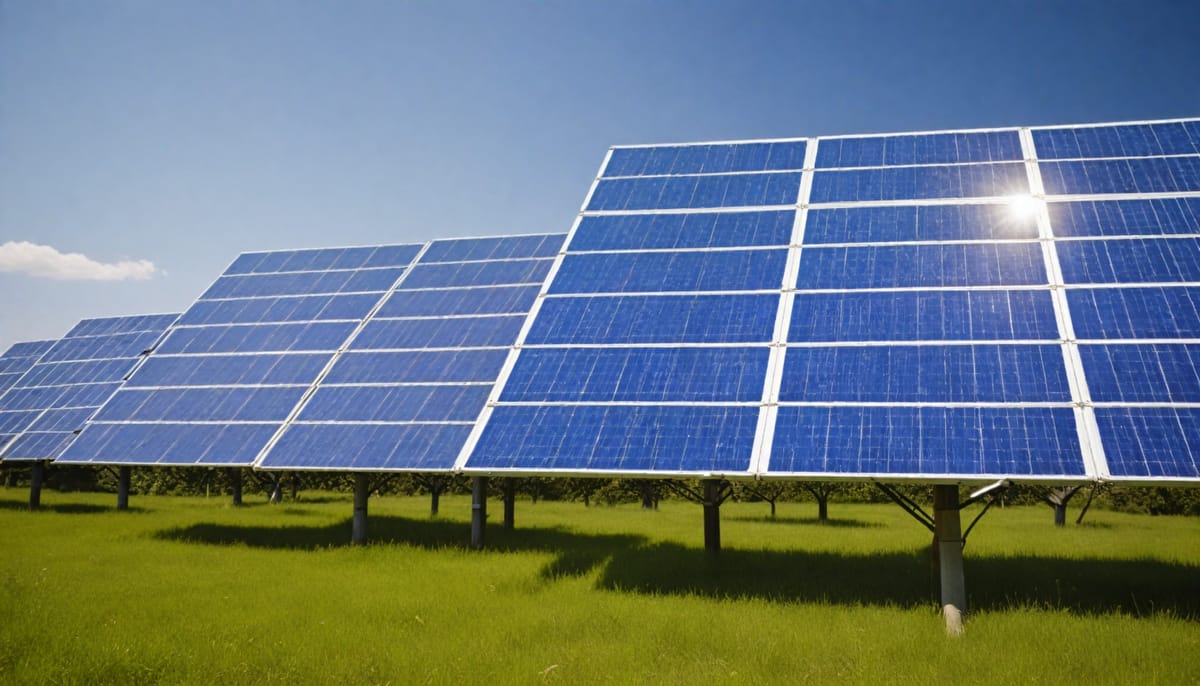Harnessing the Sun: A Guide to the Three Main Solar Technologies
There are primarily three main types of solar panels based on the technology they use to convert sunlight into electricity. The supreme efficiency of Monocrystalline, the cost-effective Polycrystalline, and the adaptable Thin-Film—each powering our future uniquely.

There are primarily three main types of solar panels based on the technology they use to convert sunlight into electricity. The supreme efficiency of Monocrystalline, the cost-effective Polycrystalline, and the adaptable Thin-Film—each powering our future uniquely.
Monocrystalline Solar Panels

- High Efficiency: Monocrystalline solar panels boast the highest efficiency rates because they are made from the highest-grade silicon. The efficiency rates of monocrystalline solar cells can range between 17-22% This high efficiency stems from the use of single-crystal silicon, allowing for optimal electron movement and less resistance, which in turn results in a higher yield of electricity from the sunlight absorbed.
- Space-Efficient: Due to their high efficiency, monocrystalline solar panels require less space to generate the same amount of electricity as other types of solar panels. This makes them an excellent choice for areas where space is at a premium. They can produce up to 20% more energy per square foot compared to other types2, making them particularly suitable for urban settings or small rooftops.
- Durability and Longevity: Manufacturers often provide a 25-year warranty for monocrystalline solar panels, indicating their long lifespan and durability. They are designed to withstand various environmental conditions and continue to operate efficiently over time. Additionally, they exhibit greater heat resistance and perform better in low-light conditions, making them effective even in areas that do not receive constant, intense sunlight.
These features make monocrystalline solar panels a preferred choice for those looking to maximize efficiency and output in their solar energy systems.
Polycrystalline Solar Panels

- Cost-Effectiveness: Polycrystalline solar panels are more affordable due to their simpler manufacturing process. Multiple silicon crystals are melted and poured into molds, which is less costly compared to the single-crystal silicon process used for monocrystalline panels. This makes polycrystalline panels a budget-friendly option for those looking to adopt solar energy without a high initial investment.
- Durability: Despite being less efficient, polycrystalline panels are known for their robustness. The fusion of many silicon crystals contributes to their structural strength, making them durable against various environmental conditions. This durability ensures that the panels can serve as a reliable source of solar energy for an extended period.
- Eco-Friendly Manufacturing: The production of polycrystalline solar panels results in less silicon waste compared to monocrystalline panels. Since the entire silicon material is used during the process, it minimizes the environmental impact, making polycrystalline panels a more sustainable choice in terms of material utilization.
These points highlight the balance polycrystalline panels offer between affordability, durability, and eco-friendliness, making them a compelling option for solar installations.
Thin-Film Solar Panels

- Versatility in Application: Thin-film solar panels are highly versatile due to their flexibility and lightweight nature. They can be installed on a variety of surfaces where traditional rigid panels would not be feasible, such as curved structures, building facades, and even clothing. This flexibility opens up new avenues for integrating solar power into everyday applications, making renewable energy more accessible.
- Lower Production Costs: The manufacturing process for thin-film solar panels is simpler and uses less material, which can lead to lower production costs. This cost-effectiveness can make solar energy more affordable and encourage wider adoption. Additionally, the reduced amount of material used in their production also means a lower environmental impact during the manufacturing stage.
- Improved Performance in Certain Conditions: While thin-film solar panels have a lower efficiency compared to crystalline silicon panels, they perform better in some conditions. For instance, they can work more effectively in low-light situations and are less impacted by high temperatures. This makes them suitable for regions with less direct sunlight or higher ambient temperatures5.
Summary
Each type of solar panel technology has its own advantages and disadvantages in terms of efficiency, cost, aesthetics, and suitability for different applications. In summary, monocrystalline panels are best for those prioritizing efficiency and space. Polycrystalline panels offer a middle ground for cost and performance. Thin-film panels provide unique applications and the lowest costs. The choice depends on the specific needs and constraints of the user, whether they are a homeowner, business, industry, or manufacturer.




